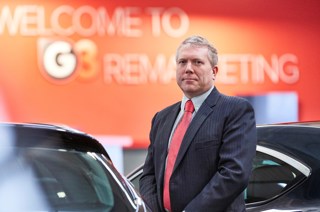The UK Government’s pledge to end the sale of new purely petrol and diesel powered cars by 2030 could be in question unless it incentivises potential electric vehicle (EV) buyers to make the switch.
Auto Trader’s Commercial Director Ian Plummer has already warned that the goal of mass adoption is at risk without tax incentives, highlighted by a slowdown in new EV leads from 27% in 2022 to 9% for the same period this year.
I agree with his him and would also urge that the government also consider investing in improving the nation’s charging infrastructure.
While the screen price between electric and traditional fuel powered cars remains significant, that differential narrows when lower maintenance and running costs are taken into consideration.
The real cost savings for motorists comes when they can take advantage of cheaper tariffs by plugging in their EV’s at home.
However, a third of all UK households don’t have off-street parking and they, along with those wishing to use their EVs on longer journeys, must use the pricier public charging points.
While the charging infrastructure is being added to, it is far from extensive, and it may be that range anxiety and the higher cost of public charging is an even greater disincentive.
Government investment in the network would not only expand the number of charging points available but create greater competition which would lower the price per kWh.
This, along with restoring tax incentives to lower the price per vehicle, would certainly get more drivers behind the wheel of an EV.
Auto Trader’s Road to 2030 Report says that despite the well documented price drops of EVs, an average year-old electric vehicle is still 28% more expensive than its petrol or diesel equivalent.
I’m convinced this is about to change and we’ll see a more favourable price realignment, triggered by the desire of manufacturers to produce affordable EVs for the masses.
Elon Musk has spoken of his vision to produce a US $25,000 (£20,044) Tesla car, while VW has already unveiled a glimpse of its ID.2all that will cost less than €25,000 (£22,129). Meanwhile, the number of EVs costing less than £30,000 in the UK continues to grow.
In January, Tesla cut £8,000 from the price of its cars and Musk has indicated that more discounts lie ahead. Meanwhile, it is reported that Hyundai UK boss Ashley Andrew is keeping a watching brief on its EV pricing.
Data suggests rival manufacturers are already responding with low interest rate deals and incentives on EVs.
Manufacturing costs will continue to fall due to reducing research and development requirements, greater economies of scale, and the availability of smaller and budget-friendly options.
Currently, the most affordable and viable electric cars start from a little over £22,000 in the UK.
For those consumers who have delayed making a big purchase by an inflation rate that has remained stubbornly north of 10%, some experts are already predicting the rate will drop – and quickly – in May, although a corresponding reduction in the cost of living may lag a further few months.
Therefore, the short-term future of the EV may be less gloomy, with a combination of lower prices, greater competition, more affordable electric vehicles and falling interest rates.
In the long term, the government can help us reach the EV tipping point much sooner by investing in a more extensive and competitive charging infrastructure, supported by greater tax incentives.
Author: Fraser Brown, founder and managing director of the automotive consultancy Motorvise



















Login to comment
Comments
No comments have been made yet.